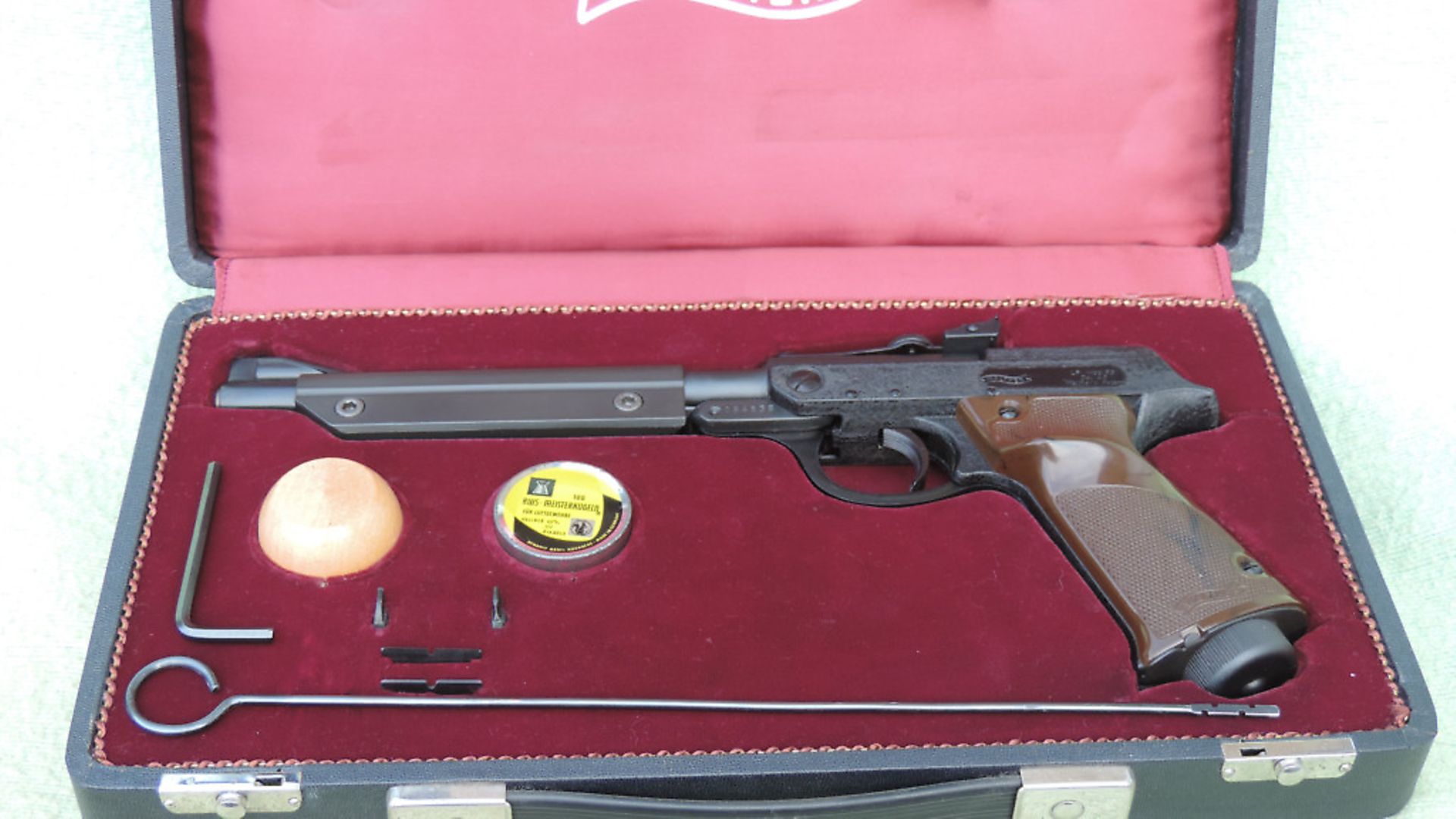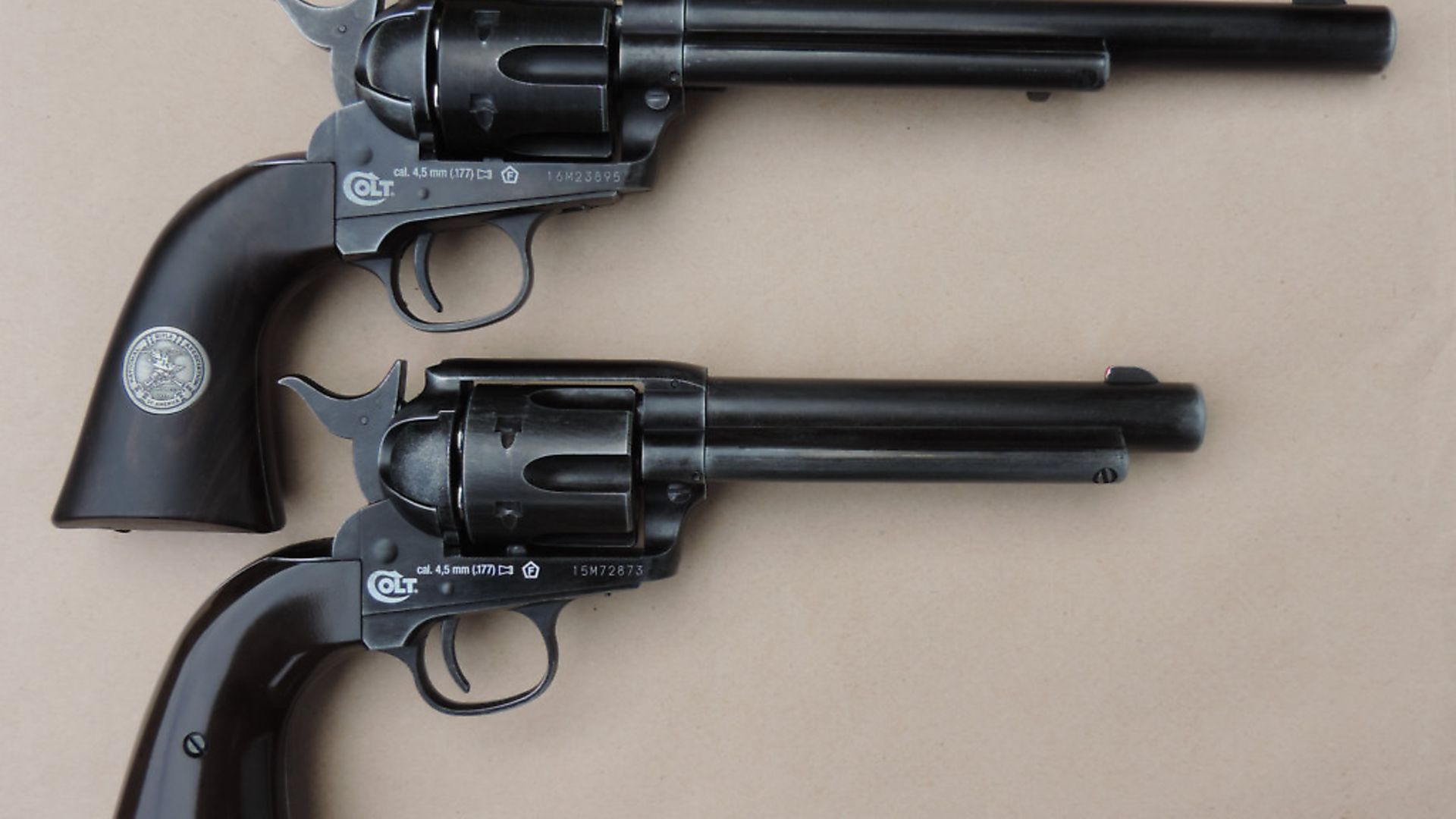John Milewski takes us through one of the most vital components of accurate shooting
 credit: Archant
credit: Archant
Read part one and part two of John Milewski’s shooting techniques here.
Accurate air pistol shooting is the sum of several parts. We have looked at the stance, along with how to hold a pistol, and this month we move on to the aim. So firstly, what do we mean by aim?
In principle, aiming with a pistol over open sights is the same as doing so with an open-sighted rifle. We need to line up the sights and then superimpose them on to the target. This is not as simple as it sounds, especially as eyes become older, or you need corrective glasses to aid your vision. Using a scope or red dot is simpler. The sight can be focused to suit your eyes, and you can see the reticle or dot superimposed upon the intended point of aim.
 credit: Archant
credit: Archant
Open sights
This is not so with open sights. The human eye is incapable of focusing on objects at different distances. When aiming a pistol, you are lining up the tip of the fore sight level with the two ears of the rear-sight blade, which will be a certain distance apart, usually the length of the barrel. You then line up the tip of the fore sight against the intended point of impact. Younger eyes may fool you because they can be elastic enough to switch focus from the rear sight to the fore sight, to the target and back again, so rapidly that you end up not noticing. I could do this once, but now my eye muscles are not so elastic. So, which do you focus on: rear sight, fore sight or target?
Authorities can differ, but I will always line up the fore sight within the rear sight notch first. I will then balance the target on top of the fore sight, whilst concentrating my focus on the fore sight during trigger release. My logic for this is, if you do not line up your sights correctly, there is a huge potential for errors and anything else you do will be wasted. Choose a target that is big enough to see, even if it is slightly out of focus. Concentrating on the fore sight is a happy medium because you should be able to notice if the rear sight gets misaligned, and you will also see the target, albeit slightly blurred.
 credit: Archant
credit: Archant
Where to place the fore sight?
So where is the best place to aim? Even match shooters disagree, so there is no hard and fast rule, other than to aim consistently in the same place for every shot. Personally, I like to see a small gap between the tip of the fore sight and the target. This stems from the ‘6 o’clock hold’ I used for 10-metre competition, which gets its name from where the sight is held in relation to a clock face. Open sights tend to be black, and placing a black set of sights against the centre of a dark target is going to lead to aiming errors. That is why match shooters zero their sights to hit the centre of the black aiming mark, whilst they place their sights below the mark, upon a contrasting white background. Some like to have a larger gap than others, but for me, a minimum area of light is what I am looking for because that small gap instantly tells me that my sights are aligned below the aiming mark and not within it. Adjustable sights will allow you to zero your pistol, so that you can aim where you think best.
 credit: Archant
credit: Archant
Fixed sights
So, what happens if your pistol only has fixed sights? This is the case with many CO2 pistols, such as the Colt Single Action Army, or some vintage air pistols such as the Webley Junior. If you line up your sights using a 6 o’clock hold, and the shots consistently group to one side or too high, the only answer is to aim off. Depending on where shots land, you will need to forget the 6 o’clock aim and place your sights opposite to where the shots are landing when using the 6 o’olock hold. For example, I have a very consistent Webley Junior with fixed sights that shoots high. When I use this pistol, I aim lower than I usually would, to hit the mark.
I admit to finding aiming off difficult. That is probably down to my muscle memory burning a picture of the 6 o’clock hold into my psyche. That sight picture is what I expect to see, and when I try to aim off, I really have to concentrate to retain my sights in what seems to me, an unnatural place. It can be done, though, and like all techniques, takes practice.
 credit: Archant
credit: Archant
Consistency is the name of the game
I like nothing better than losing myself in a shooting session. I can become oblivious to all that is around me as I concentrate on the various elements that equal good pistol technique. I’ll empty my mind of the daily worries life brings, and fire shot after shot in the same consistent manner downrange. I’ll load my pellets in the same manner, using the same technique, I’ll present the pistol into the aim and fire the shot in the same way – every time. This is consigning technique to muscle memory, and after a few practice sessions you will be rewarded with good results downrange.
Next time, we’ll look at trigger technique. This is probably the hardest element of pistol shooting to learn and brings the whole shot cycle together. Until next time, keep up with that practice!